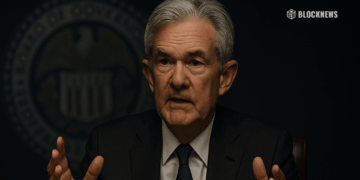- The International Monetary Fund recently shared valuable findings concerning vulnerabilities in the world of cryptocurrency.
- The paper introduces the Crypto-Risk Assessment Matrix, aimed to aid nations in spotting hazards and formulating regulations accordingly.
- El Salvador’s daring decision to embrace Bitcoin as an official currency in 2021 has drawn attention, with potential market, liquidity, and regulatory concerns being highlighted.
The International Monetary Fund (IMF) recently unveiled fresh insights on September 29, emphasizing potential risks in the cryptocurrency sector. The comprehensive research was penned by Burcu Hacibedel and Hector Perez-Saiz and introduced a new analytical tool called the Crypto-Risk Assessment Matrix (C-RAM). This innovative tool aims to assist countries in detecting possible threats in the cryptocurrency landscape and in crafting appropriate regulatory responses.
The C-RAM functions through a clear three-step process. It starts by utilizing a decision-making framework to assess the broader economic implications of cryptocurrency. This is then followed by a segment focusing on signs similar to those used in traditional finance evaluation. The concluding step of the tool zeroes in on overarching financial threats, particularly those affecting a country’s system-wide risk evaluations.
A noteworthy segment of the document discusses El Salvador’s bold step of designating Bitcoin as its national currency in September 2021. Through the lens of C-RAM, several concerns related to the market, liquidity, and regulations surface. The report hints at the substantial economic ramifications of El Salvador’s leap into the crypto world. The potential surge in cryptocurrency usage across the country might disrupt financial equilibrium, especially when considering the country’s reliance on external funds and financial inflows.
Prior to this research, the IMF had expressed reservations regarding El Salvador’s crypto integration. In the early months of 2022, specifically January, the monetary institution suggested that the nation rethink its decision. Their primary worries revolved around the maintenance of financial balance, the trustworthiness of the finance sector, and the protection of its users.
With the rapid developments and changes in the cryptocurrency sector, regulatory bodies worldwide are racing to develop structures to counteract new challenges. Underpinning this sentiment, a joint effort between the International Monetary Fund and the Financial Stability Board on September 7 resulted in a publication. This document, shaped by a request from the G20 presidency of India, set forth unified principles and advice concerning risks related to crypto.
US Regulators Continue to Tackle Crypto’s Complexity
As cryptocurrencies gain traction, U.S. financial watchdogs, the Securities and Exchange Commission (SEC) and the Commodity Futures Trading Commission (CFTC), are working diligently to establish guidelines and regulations. While neither agency is fundamentally opposed to digital currencies, their approach to oversight has sparked debates.
The SEC, under Chair Gary Gensler, believes that the nation’s current laws are sufficient for regulating the burgeoning crypto space. Notably, the SEC has leaned towards legal actions for setting regulatory precedents instead of crafting new policies.
Conversely, the CFTC has expressed reservations and differing viewpoints, especially concerning the categorization of certain cryptocurrencies. The crux of their discussion revolves around whether specific cryptocurrencies should be considered as securities, which would fall under the SEC’s oversight, or as commodities, thus coming under the CFTC’s jurisdiction.
Adding another layer of complexity, Decentralized Finance (DeFi) has raised questions and challenges for both regulatory bodies, emphasizing the need for clarity and protections for investors.
As crypto evolves, both the SEC and CFTC remain committed to understanding and shaping the framework to maintain financial market integrity and safeguard investor interests.














